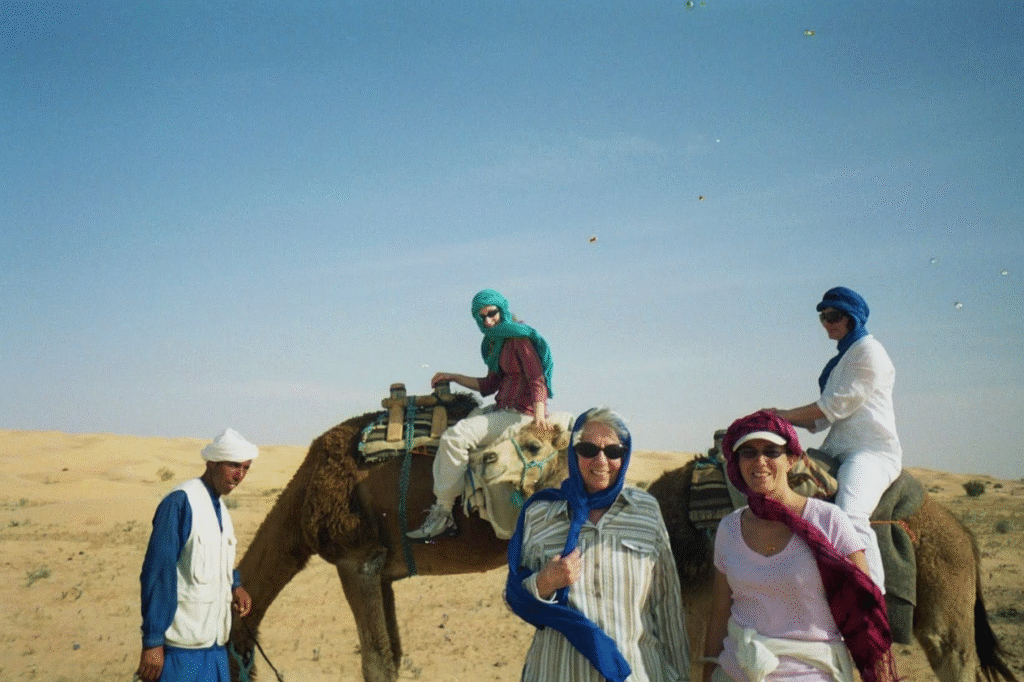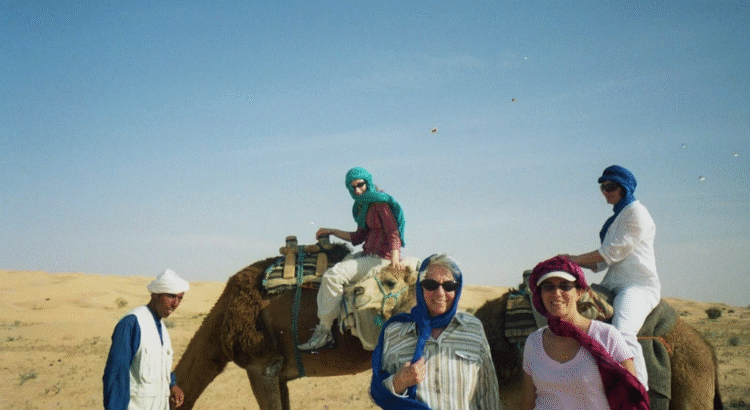
The Sahara. A name that evokes images of endless golden dunes, burning sunrises, and camels silhouetted against the horizon. But beyond its stark and stunning beauty lies something deeper—a vast silence that stretches across space and into the soul. My journey through the Sahara Desert was not just a physical trek across sand and stone. It was a journey inward, a confrontation with silence, solitude, and self.
Before I ever set foot in the desert, I had romanticized it. I imagined Lawrence of Arabia-like scenes, Berber tribes with colorful scarves, and nights under constellations that stories are made of. What I did not anticipate was how the Sahara would strip away every distraction of modern life and force me to listen—to the wind, to the silence, and eventually, to myself.
Arrival In The Desert: The Edge Of The World
My journey began in Merzouga, a small Moroccan village at the edge of the Erg Chebbi dunes. It felt like the last outpost of civilization. Here, the paved roads give way to dusty paths, and the skyline transforms from city lights to towering dunes that glow orange in the afternoon sun.
I joined a small caravan led by local Berber guides, who greeted us with mint tea and quiet smiles. Our camels, tall and serene, waited patiently. As the sun began its descent, we mounted up and began our slow march into the unknown.
With each step deeper into the desert, I felt the layers of my old life peel away. The phone had no signal. There was no internet, no notifications, no breaking news. Just the rhythmic plodding of camel hooves on sand and the occasional wind brushing against my scarf. It was liberating.
Dunes And Dreams: Life At Camel’s Pace
Traveling by camel is unlike anything else. It’s not fast. It’s not particularly comfortable. But it has a rhythm, and with time, you begin to match it. The gentle swaying lulls you into a meditative state. There’s time to observe, to reflect, to simply be.
The dunes rolled like waves, each one rising to kiss the sky and falling into another sea of sand. No two were alike. Their curves were elegant, sculpted by centuries of wind. The colors shifted with the time of day—gold at noon, pink in the early morning, deep amber at dusk.
We stopped for the night at a camp tucked between the dunes. The Berbers prepared a simple dinner—tagine with bread, olives, and warm dates. There was no electricity. Only the stars illuminated our gathering. I lay back on the sand after the meal, stunned by the sky. I had never seen stars like this. There was no pollution, no buildings, no lights—just the pure tapestry of the universe, stretching endlessly above us.
That night, wrapped in a thick wool blanket, I slept on the sand under the stars. And for the first time in a long time, I slept deeply. No alarms. No noise. Just peace.
Silence: The Desert’s Greatest Gift
On the second day, the landscape grew more surreal. The dunes became higher, the wind more pronounced. Our guides were quiet—only speaking when necessary, often smiling, always respectful of the desert’s silence.
It was then that I began to truly hear the silence. Not the silence we know in cities—a quiet moment between car horns. This was different. This was complete absence. No birds. No buzzing electricity. No footsteps but my own. At first, it was unsettling. But then something shifted.
In that silence, I heard my thoughts more clearly than ever before. All the things I had been avoiding—the questions about my purpose, my relationships, my fears—they floated up, unavoidable and honest. There was no one to impress, no role to perform. Just me and the truth.
I realized how much noise I carried within me. The chatter of self-doubt. The pressure to be constantly productive. The endless comparisons. Out there, in the desert, with no signal and no audience, those voices began to quiet down. I started to recognize the voice beneath them—the one I had forgotten. My own.
Meeting The Berbers: Lessons In Simplicity
The Berber guides were masters of the desert. They knew the sands like old friends, could read the wind’s direction from a whisper, and always found water when we needed it. Their lives were simple, but not lacking. In fact, I saw more contentment in their eyes than in most corporate offices back home.
They taught us how to tie our turbans against the wind, how to listen to the dunes to predict a storm, how to find direction by the stars. They shared stories around the fire—myths of the desert, tales of spirits and lost caravans, and songs that echoed like prayers.
But more than the skills, it was their presence that impacted me. They lived in the moment. They laughed easily. They were generous without expecting anything in return. I asked one of them, “Do you ever get bored out here?” He smiled and said, “Never. The desert teaches you everything.”
A Storm And A Revelation
On the fourth day, a sandstorm swept through our camp. The sky turned grey, and the wind howled like a wild spirit. We huddled together, scarves wrapped tightly, eyes shielded. The sand stung, the air thickened, and visibility dropped to almost nothing.
It was disorienting. In a matter of minutes, the peaceful landscape became hostile. But our guides were calm. They led us through it, adjusting our path, keeping us safe. And just as quickly as it came, the storm passed.
In its aftermath, the desert was reborn. The dunes had shifted. Footprints were erased. It was as if we had never been there. I stood atop a newly shaped dune and looked out at the vast horizon. Everything was different. And yet, everything was still.
In that moment, I felt something shift inside me too. I realized that life is like the desert—constantly changing, shaped by forces we can’t always see or control. And yet, we move forward. We adapt. We endure. We find beauty in the aftermath.
The Return: Bringing The Desert Home
Eventually, we returned to Merzouga. The journey back felt surreal. The sounds of engines, the return of cell signal, the blinking of digital life—it all felt foreign, almost too loud.
But I was not the same person who had entered the desert days before.
The Sahara had taken away distractions and given me clarity. It had removed my masks and shown me my real face. It had taught me the value of stillness, of space, of listening. I found pieces of myself buried under layers of sand and silence. And though the world around me resumed its hectic pace, I carried the desert within me.
I brought home a few small things—a handful of sand in a jar, a Berber scarf, photos of sunrises over dunes. But the most precious souvenir was invisible: a renewed connection to myself.
Practical Tips For Your Own Sahara Journey
If you’re considering your own journey through the Sahara, here are some tips to make it meaningful:
- Choose A Reputable Guide: Local Berber-run tours are best for authentic experiences. Look for eco-conscious operators who support the community.
- Pack Light, But Smart: Sunscreen, a scarf or turban, loose breathable clothing, and a good camera. Nights can be freezing, so pack warm layers too.
- Disconnect: Turn off your devices. Let the silence do its work.
- Respect The Environment: Don’t litter. Stay on designated routes. Leave no trace.
- Stay Present: Don’t over-schedule. Embrace slowness. Reflect. Write. Just be.
Final Reflections: The Desert Within
The Sahara is not just sand. It’s a mirror. It reflects who you are, who you’ve been, and who you’re becoming. It doesn’t lie. It doesn’t distract. It simply is. And in its vast, echoing silence, you might just hear something beautiful—yourself.
I went to the Sahara thinking it would be an adventure. It was. But it was also a return—back to simplicity, back to mindfulness, back to meaning. In the sea of sand, I found a shore within.
So if you ever feel lost, overwhelmed, or disconnected, go to the desert. Not to escape, but to remember. The Sahara doesn’t give answers. But it helps you ask the right questions. And sometimes, that’s all you need to begin finding your way again.

